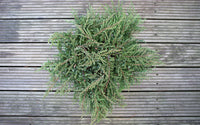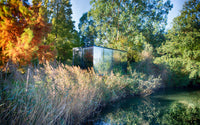Gardening can seem overwhelming and confusing, especially if you’re a beginner, but with Lime Cross Nursery’s monthly back-to-basics guide to the garden, there has never been a better time to get outside, learn and grow in knowledge as you watch your garden grow!
Each month we’ll give helpful tips and cover the necessary tasks to be carried out.
As we approach Spring, March is the last chance to plant bare-root fruit trees and from about mid-way through the month onions, shallots, garlic and asparagus crowns can be planted too.

Early and maincrop potatoes should be chitted now, which simply means breaking the dormancy and encouraging the seed potatoes to sprout before planting. The best method would be to place the seed potatoes in trays or egg boxes. The blunt end, or the end with the most ‘eyes’ should face upwards. It can take around two to three weeks for shoots to reach a 1-2cm height and they can then be planted in 15cm trenches between mid-March and mid-April.

Examples of seeds which can be sown outdoors this month include: carrots, parsnips, broad beans, peas, lettuce, spinach and salad leaves, radish, summer cabbage, leeks, swish chard, summer cauliflower, beetroot and turnip. These would be best placed in mild areas with light soil, but with the weather being as wet and washed out as it has been, be vigilant and only plant if the conditions are right.
Thankfully, the wet weather won't effect indoor growing. Indoors, cucumbers, aubergines, tomatoes, sweet peppers and celery seeds can call be sown. Fill clean containers with a moist potting mix made specifically for seedlings and plant seeds at the depth stated on the packet, planting more than you consider necessary in preparation for failed germination. Label your pots so you remember what’s growing and loosely cover the containers with clear, waterproof plastic to stop them from drying out, poking holes in the material for comfortable ventilation. Water carefully, trying not to disrupt the soil. When you start to see growth, the cover can be removed and the containers can be placed in the light. A window sill would be perfect for this, however, make sure to rotate often to keep the seedlings growing evenly. When you spot a second pair of leaves, carefully move the seedlings to individual pots filled with plenty of compost and a potting mix, watering well. They should avoid direct sun for a few days and as they continue to grow, water as needed, baring in mind that young seedlings can easily dry out.
As a general rule, avoid digging in wet weather. It’s easier said than done given the current climate, but if gardening in the wet, work away from the soil or lean on something else to avoid compacting the soil.
If the weather is miraculously dry, pruning of newly planted fruit trees can take place in order to establish form. Blackberry canes and the canes of other berries which have been bundled together for the colder months can now be untied and trained into arches.

March is a great time to start on weed control if it hasn’t already been tackled. Continue to stay on top of it moving towards summer. Feed crops which have been standing since winter and if necessary repot or top dress container-grown fruit.

Prepare seedbeds by warming the soil by covering with clear polythene and form trenches for runner beans and celery in the coming months.
Be sure to protect your early sowings from slugs, cover with clear polythene if necessary and check regularly for mould and downy mildew on brassicas. Protect fruit blossom from potential frost, but make sure insects can still access the flowers for pollination.
It’s also a good time to nurture cherries, blackcurrants, plums, pears and cooking apples with a nitrogen based feed. Mulch berries with well-rotted farmyard manure, something more acidic than alkaline and the ground isn’t frozen also apply a mulch around bushes, nuts and fruit trees.
We’ll be back at the beginning of April with more tips, tricks and to-dos for the next month of gardening!
All images are taken from the Royal Horticultural Society and are not owned or affiliated with Lime Cross Nursery.








